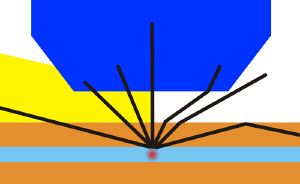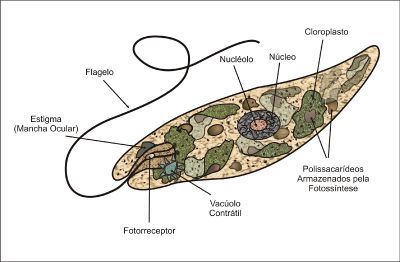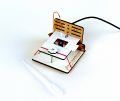| Line 42: | Line 42: | ||
====Medium #2==== | ====Medium #2==== | ||
*[[:File:Euglenamedien.pdf|Autotrophic and mixotrophic media]] | *[[:File:Euglenamedien.pdf|Autotrophic and mixotrophic euglena media]] | ||
====More info==== | ====More info==== | ||
Revision as of 14:11, 18 October 2017
Related projects
Ingmar Riedel-Kruse lab at stanford university
Trap it!, http://web.stanford.edu/group/riedel-kruse/publications/CHI517-lee.pdf
Museum visitors could use blue, green or red light to draw patterns on the screen and observe how the Euglena reacted. The microorganisms avoided blue light, so drawing a circle around one of the microbes would trap it, which became the name for one of the scientific mini-games
Euglena soccer, https://www.youtube.com/watch?v=3lwU9deF8rw start at 27:05, https://www.youtube.com/watch?v=Pdx7BkYSCq4
Players earn points by guiding the Euglena through the goal posts.
GMU
Blocksworld repopulated! (2016), http://biogames.eu/
“The BioGame ‘Blocksworld repopulated!’ gives you the opportunity to plunge into a labyrinth populated by microorganisms that you can interact with. Instead of encountering programmed entities in ‘Blocksworld repopulated!’ you are playing with living Euglenas, uni-cellular organisms that are part plants and part animals.”
Protists
A protist is any eukaryotic organism that is not an animal, plant or fungus. The protists are unicellular or unicellular-colonial and form no tissues.
Euglena
Classification
- Domain: Eukaryota
- Class: Euglenoidea
- Genus: Euglena
Description
Euglena is a (endo)symbiotic creature. It is considered belonging to protista kingdom, having features of animal, plant or fungus.
“Euglena are found in fresh and salt waters. They are often abundant in quiet inland waters where they may bloom in numbers sufficient to color the surface of ponds and ditches green (E. viridis) or red (E. sanguinea).” (wikipedia)
“Most species of Euglena have photosynthesizing chloroplasts within the body of the cell, which enable them to feed by autotrophy, like plants. However, they can also take nourishment heterotrophically, like animals.” (wikipedia)
Medium #1
"Combine 1 L of spring water or Chalkley’s 1x solution or Pringsheim’s, 20 wheat or rice grains, and 5 mL (1 tsp) of dry powdered milk in a beaker. Boil the mixture for 5–10 minutes, and then dilute this mixture with 3 L of spring water. Let this solution cool and stand uncovered for 24 hours. Shake or stir the media solution and fill shallow containers with wide bottoms approximately half full. (Stacking culture bowls work best.) Add 50–100 mL of Euglena stock culture to each bowl. The Euglena culture medium contains a great deal of organic matter. Bacteria will grow rapidly and the cultures are likely to have a pungent odor for several days. (Take this into consideration when selecting a culture storage location.)
Chalkley’s Stock Solution 10x (Dilute by a factor of 10 for 1x (e.g., dilute 100 mL to 1 L with distilled water))
0.06 g CaCl2 1.00 g NaCl 0.04 g KCl 1 L Distilled water
Medium #2
More info
Amoeba
Microscopy

Microscope Use
Microscopy with Oil Immersion
"In light microscopy, oil immersion is a technique used to increase the resolving power of a microscope. This is achieved by immersing both the objective lens and the specimen in a transparent oil of high refractive index, thereby increasing the numerical aperture of the objective lens. Immersion oils are transparent oils that have specific optical and viscosity characteristics necessary for use in microscopy."(https://en.wikipedia.org/wiki/Oil_immersion)
Further read and how to: http://www.micrographia.com/tutoria/micbasic/micbpt07/micb0700.htm


